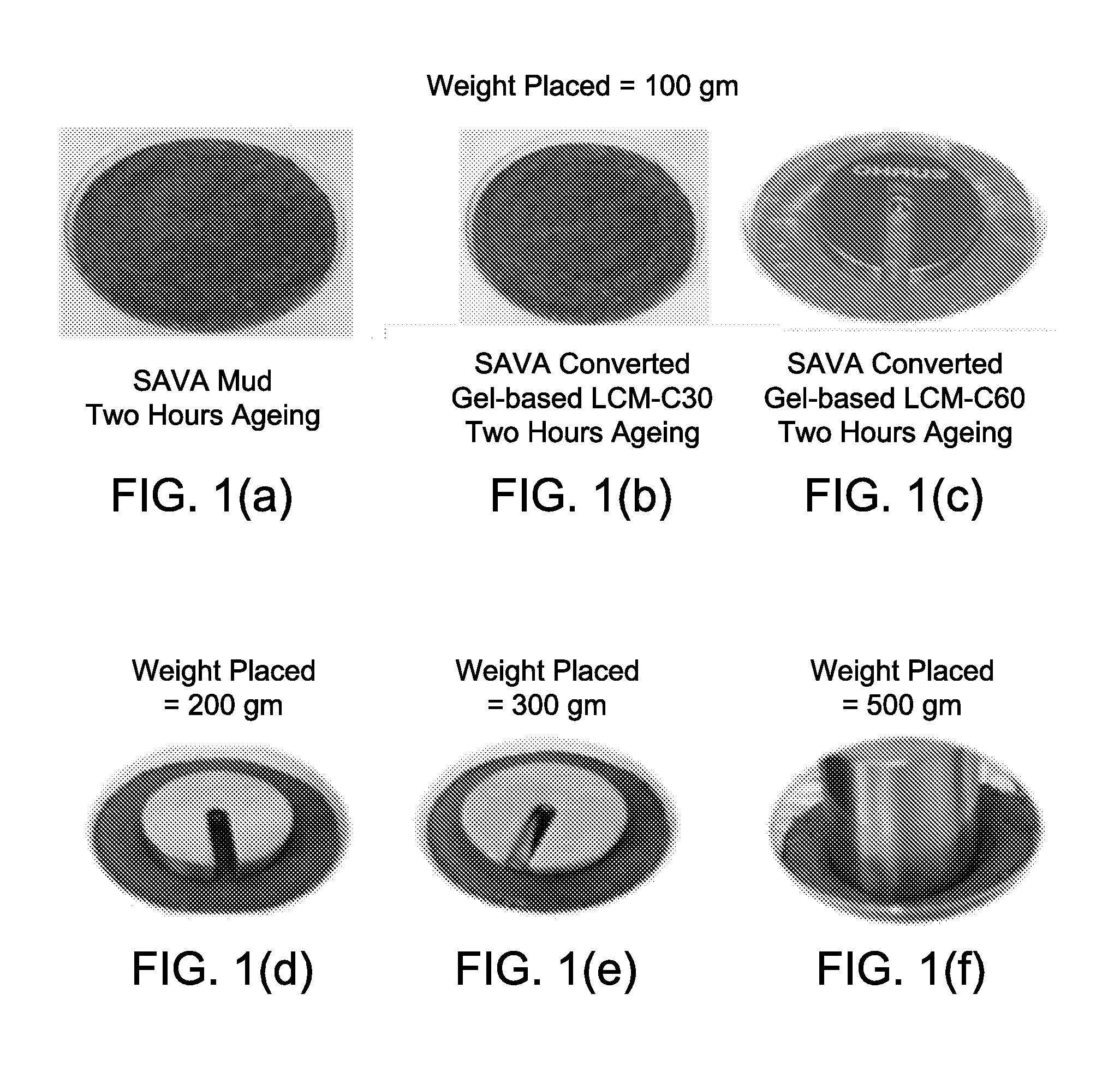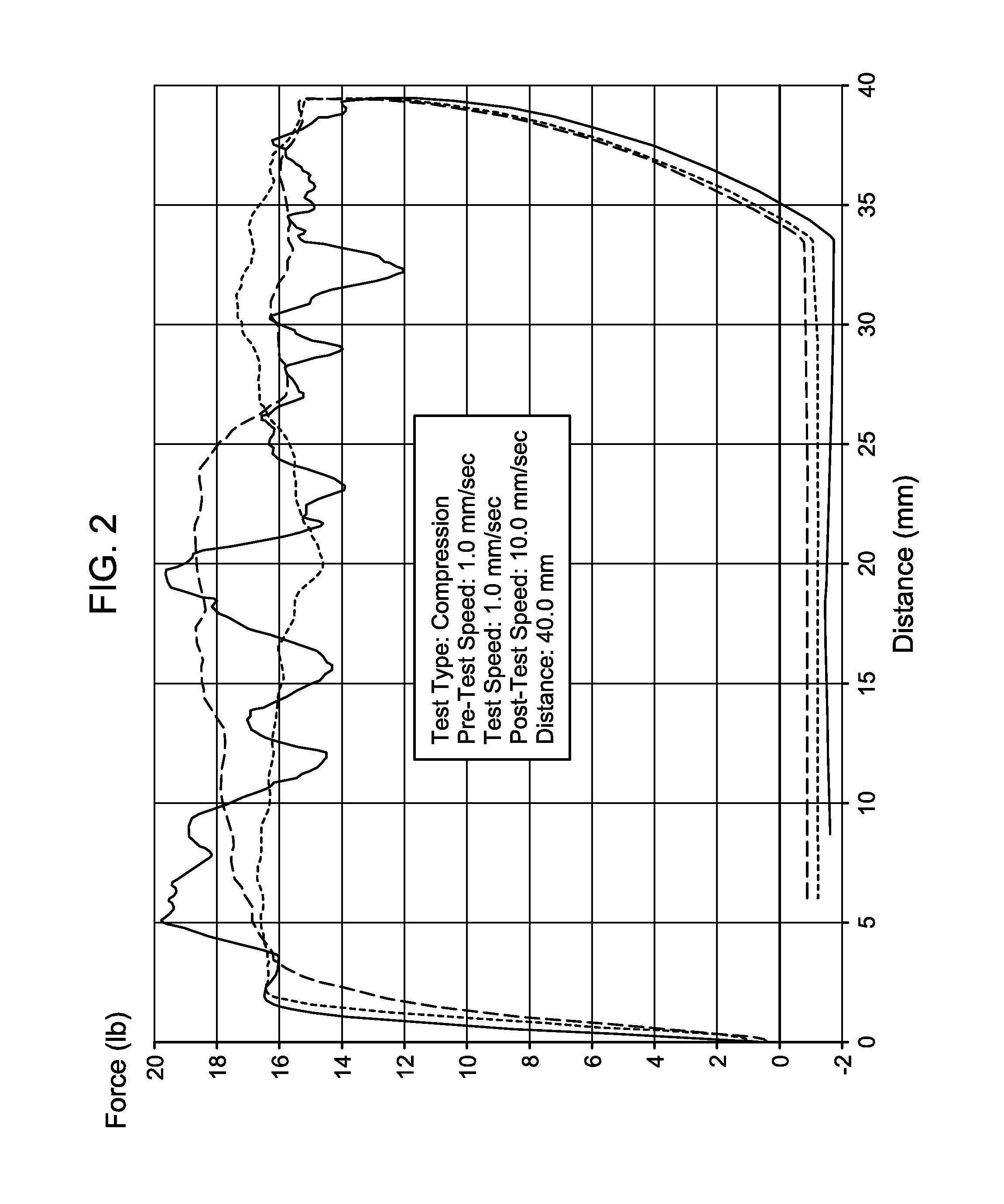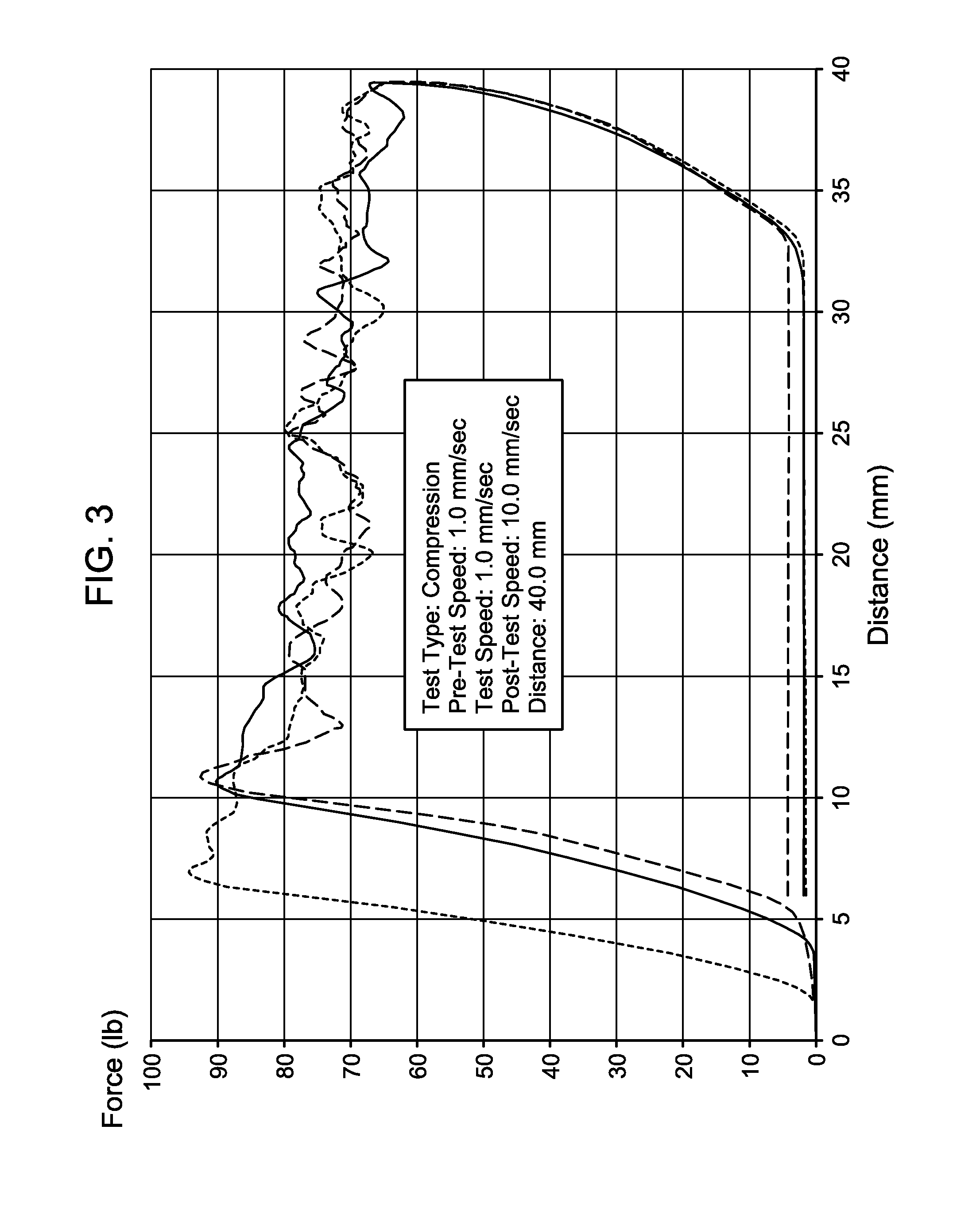Method of Conversion of a Drilling Mud to a Gel-Based Lost Circulation Material to Combat Lost Circulation During Continuous Drilling
a technology of lost circulation and gel-based lcm, which is applied in the direction of drilling composition, drilling/well accessories, chemistry apparatus and processes, etc., can solve the problems of fluid loss beyond acceptable norms, frequent challenges encountered, and loss of circulation, so as to reduce the formation of foam
- Summary
- Abstract
- Description
- Claims
- Application Information
AI Technical Summary
Benefits of technology
Problems solved by technology
Method used
Image
Examples
example 1
[0074]In example 1, three different samples of the gel-based LCM were created, Table 1. The volcanic ash was a Saudi Arabian volcanic ash (SAVA). The viscosifier was XC polymer. The viscosifier was a pysllium husk powder (PHP). The pH buffer was sodium hydroxide. The de-foamer was Barabrine. The binder was a class H cement. Each sample contained a different amount of the binder added to a prepared dual-purpose drilling mud. Each sample was mixed for 20 minutes using a variable speed Hamilton Beach mixer. A standard rotational viscometer was used to measure the rheological and gel strength properties of the resulting gel-based LCM sample, Table 2. The rotational viscometer readings were taken at room temperature and atmospheric pressure. The rotational viscometer was used to assess the inter-particle bond strength of the mixture after aging periods of 10 minutes, 1 hour, and 2 hours (Table 3). After the two hour aging period, a suspended weight test was performed as a second comparat...
example 2
[0080]In Example 2, samples of the gel-based LCM and samples of conventional LCMs were subjected to compression tests for comparison. The components and composition for each sample are shown in Table 4. The conventional LCMs, samples G and H, were prepared using two different commercially available water soluble polymers ZND-2 and ZND-6. To prepare the samples, the components of each sample were mixed together for 20 minutes using a variable speed (rpm) Hamilton Beach mixer. The samples were cured for two hours in a closed container to allow time for inter-particle bonding, networking, and gel stiffening. The compression tests were performed using a test cell that included a perforated disc connected to a computer and program that displayed the results electronically. The test cell ensured the same volume of sample was used in each compression test. All the samples were tested under the same conditions, compression test type with a pre-test speed of 1.0 nm / sec, a test speed of 1.0 m...
PUM
| Property | Measurement | Unit |
|---|---|---|
| time | aaaaa | aaaaa |
| gelling time | aaaaa | aaaaa |
| time | aaaaa | aaaaa |
Abstract
Description
Claims
Application Information
 Login to View More
Login to View More - R&D
- Intellectual Property
- Life Sciences
- Materials
- Tech Scout
- Unparalleled Data Quality
- Higher Quality Content
- 60% Fewer Hallucinations
Browse by: Latest US Patents, China's latest patents, Technical Efficacy Thesaurus, Application Domain, Technology Topic, Popular Technical Reports.
© 2025 PatSnap. All rights reserved.Legal|Privacy policy|Modern Slavery Act Transparency Statement|Sitemap|About US| Contact US: help@patsnap.com



